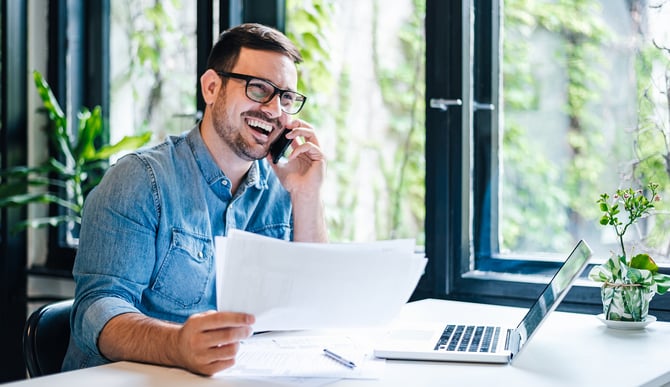Working remotely has been a part of our lives since the beginning of human existence. It started with the hunters and gatherers. Even as late as the 1800s, most business owners ran their services from their own homes. But then came the industrial revolution, which transplanted the bulk of the labor market to factories, offices or other places of business for more than a century.
It really wasn’t until the 1990s that the Work from Home (WFH) employment model started popping up again as a desirable employment model and a viable perk. At the time, businesses were clamoring for tech savvy employees, most of whom were Gen Xers or Millennials. These skilled employees held a tremendous amount of clout and bargaining power – and essentially demanded WFH accommodations and more flexibility in exchange for their formidable skills.
Read “Leveraging Generational Differences in Your Team.”
While these new dynamics were perhaps inconvenient for business owners and employers, adopting to this now decades-old employee engagement approach surely facilitated the ease in which business transitioned to the WFH model during the pandemic.
Working from Home Before Covid
According to Statista, around 17% of U.S. employees worked from home five days a week or more in 2019, having nudged up slightly throughout the previous 10 years. While business owners understood how much their employees valued flexibility and perks like “Remote Fridays,” most of the time workers performed their jobs in-office. For obvious logistical reasons, tech companies were more apt to offer telecommute opportunities than location-specific businesses like manufacturing and construction.
Then Along Came Covid
When the pandemic hit in March 2020, business owners sent their people home. By May of that year more than one-third of U.S. employees – nearly 50-million people – were working from home. That number rose to more than 40% in the coming months.
As lockdown, shutdown and Safer At Home protocols continued for the preponderance of non-essential workers, many employees embraced the WFH dynamic and were hesitant to ever return to their brick and mortar workplace. A McKinsey study estimated that nearly 30% of work in the U.S. could be performed remotely with no loss in productivity. So the general consensus among U.S. employees was that if they could perform their jobs as good or better by working remotely, isn't the WFH employment model a win-win for business owners and their teams?
The Waning Days of the Pandemic
Not unlike their 1990s counterparts, post-pandemic employees were in an ideal position to demand more remote work options. They knew the WFH employment model was feasible, they knew they valued their lack of commute time, and they knew they held the upper hand in a challenging labor market.
Zippia reports that by 2022, 26% of fulltime employees were working remotely, while more than 90% of employees worked from home at least one day per week.
What Is the WFH New Normal?
The preference for telecommuting is not expected to ebb any time soon. While WFH certainly has the support of millions of employees seeking better work-life balance, business owners can also reap tremendous benefits from continuing to support innovative employment models in their companies.
Research firm Global Workplace Analytics estimates businesses save up to $11,000 for each employee working remotely at least two or three days per week. And a study by Stanford University reported that WFH increased employee productivity by 13%. Now spread those numbers across an entire organization, and business owners get a very real sense of the value remote work options bring to their bottom lines.
Many industry experts suspect a continued shift to WFH options in the coming years, including an increase in hybrid options for those employees who are more regularly required on site.
Perhaps in response to the pandemic or the challenging labor market that followed, or most likely a combination of both, business owners are now more committed than ever to the wellbeing of their employees and workplace wellness throughout their business.
And as far as new normals go, that is a pretty positive development.







